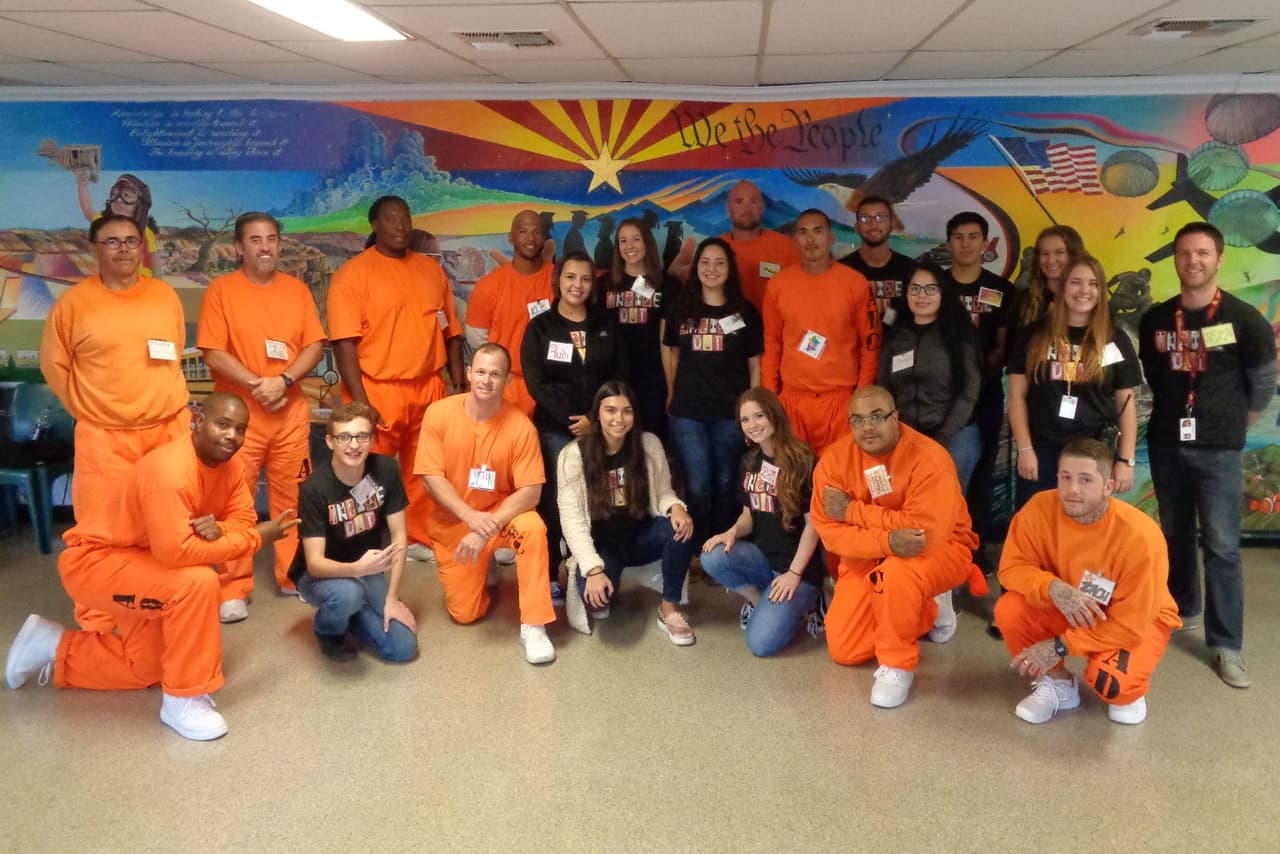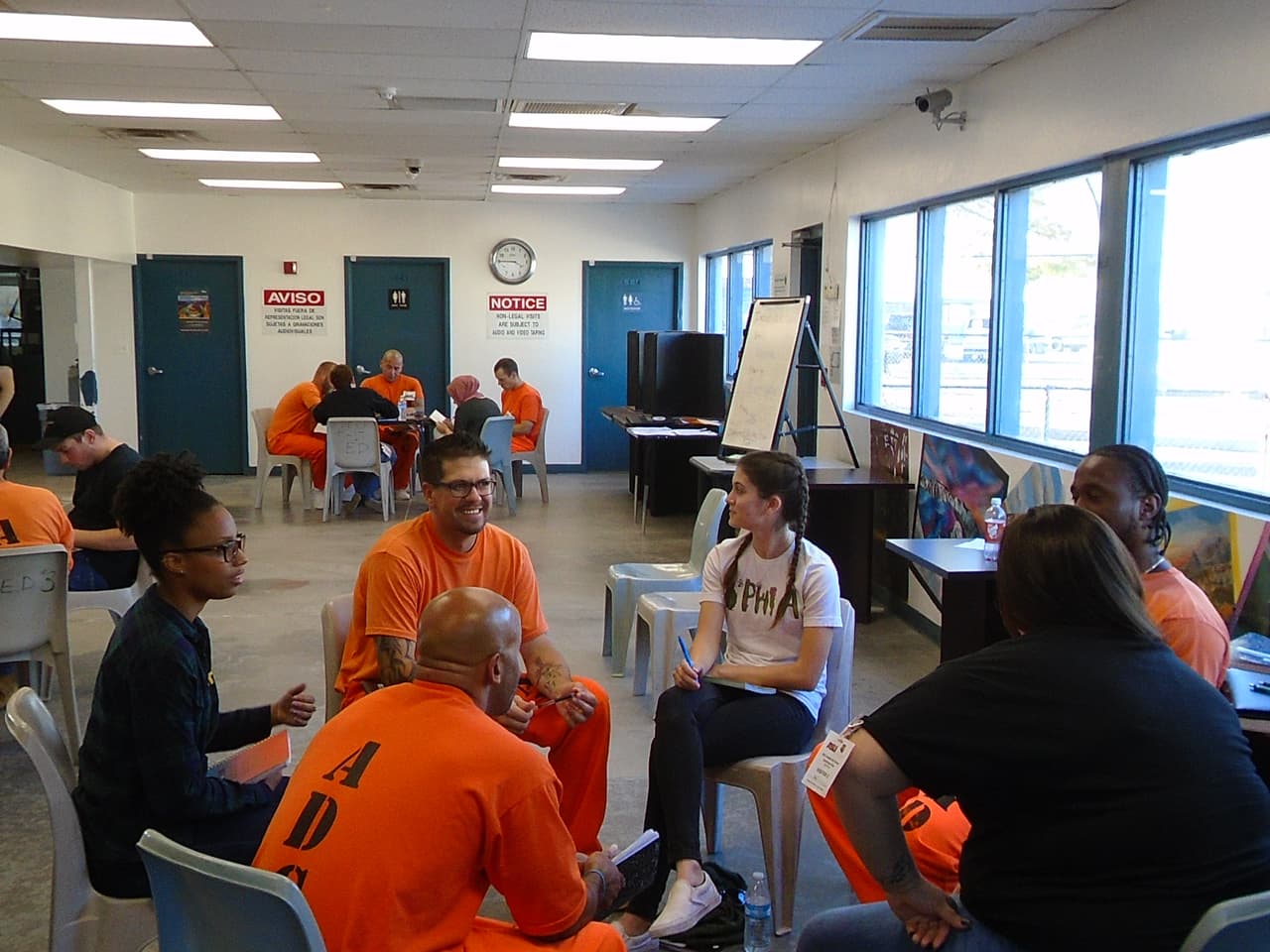“We were showing them that we weren’t animals. These classes helped me change my way of thinking,” said Zachary Manuz, a participant in the Inside-Out exchange program, in which college students spend a semester far from the classroom, inside prison alongside people serving sentences.
These classes in prison taught him to live in freedom: Zachary Manuz’s story
The third time was the charm, but not because of luck or the popular saying; rather, it was thanks to Inside-Out, a program in which prisoners share their education with non-imprisoned college students. “It was a powerful, transforming process,” he said.
Aquí puedes leer este artículo en español

Manuz, a U.S. citizen and the son of Spaniards, has been in prison three times, for almost 10 years, between the ages of 18 and 28. The Inside-Out program was a determining factor in allowing him to change his self-perception. “I never thought I could think in a different way,” he said.
The first two times Manuz got out of prison, he recidivated. He said it happened because he never received the help that would have allowed him to really face his problems. He was released for the third time in September of 2019, but this time he is approaching his return to society with optimism. He went so far as to publicly support prison reform last February in front of the state capitol in Phoenix, Arizona.
Most people who have been in prison recidivate. According to a report from the Bureau of Justice Statistics, 5 out of every 6 are arrested again at some point during the next nine years, and more than 10,000 people are released weekly from federal and state prisons.
Rehabilitation, education and re-entry programs are fundamental to making possible the path to freedom. Those who participate in educational programs while confined have a 28% lower probability of reoffending in comparison with those who do not participate in such programs, according to an analysis published by the Journal of Experimental Criminology.
In the U.S., even though most of those people (64%) are academically eligible for higher education, only 9% complete an educational program, according to a report from the Vera Institute of Justice and the Georgetown Center on Poverty and Inequality.
For Manuz, the exception was his time in prison while serving his third sentence. “I took two classes offered by ASU (Arizona State University). They were the only ones in which, for the first time, my old ways of thinking where challenged with a new and better way. It was powerful and transforming.”

Some officers want to help
“They taught us about motivation and how to better understand the environment we were living in,” Manuz said. “We devised solutions writing essays on how to make prison better while at the same time working with the correctional staff. We also came to better understand the psychology of the staff there, because we came to learn that there were some good ones, like good officers there that would like to help.”
The college students take the class inside the prison. Kevin Wright, Director of the Center for Correctional Solutions and Associate Professor in the School of Criminology and Criminal Justice at Arizona State University, started the Arizona Inside-Out program in 2016.
He first offered classes in criminal justice, and then in motivational justice. “That class focuses on what motivates people. It includes a lot of psychology and organizational psychology about what makes for good businesses, groups and cultures. We've taken all that information and brought it into criminology and criminal justice to think about how we can better do corrections and better approach rehabilitation,” Wright said. The “inside” students not only connect with people on the outside, but also work together on projects to improve the criminal justice system.
The most important thing that the class brings about is a change in perspective. “Students see that people that are in the system are just people; they're not scary inmates that have done horrible, terrible things,” the professor says.
“It's often the case that those that are especially violent are a very small proportion of people in the prison. Our students are learning. What we weren’t expecting is that the incarcerated students also got a chance to see a different version of the people who work in the criminal justice system. A lot of our students at ASU want to go into policing and be law enforcement officers. The class changed the perspective of people who are incarcerated. It's not just ‘the cop that put me in here’ or ‘all cops are dirty’; ‘I now see Megan, my classmate’ who is going to be a law enforcement officer,” he said.
Manuz said he gained a lot of respect for and learned to like his “outside” classmates. “We’re so moved. We listened to all these good ideas from the students. We could see that these outside criminal justice students had never done anything wrong.”
A sense of purpose
The Inside-Out Prison Exchange Program was started in 1997 by Lori Pompa at Temple University in Philadelphia. According to its website , it has offered more than 1,100 classes to more than 50,000 “inside” and “outside” students in 48 U.S. states and 12 countries. The classes are varied and include subjects such as criminology, theater, African-American studies, public health, nursing and political science.
Since its start in Arizona in 2016 under Professor Wright’s direction, seven classes have been offered, in which almost 150 students have participated (70 from ASU and 74 prisoners, including 10 incarcerated women). The program is offered in collaboration with the ASU School of Criminology and Criminal Justice and the Arizona Department of Corrections, Rehabilitation and Reentry (ADCRR). This semester, because of COVID-19 social distancing restrictions, the class is being taught remotely.
Wright acknowledges that the impact happens at every level. “As someone who is teaching it, it has changed my life, but I think it has also changed our students’ lives. Being able to experience that firsthand is incredible. It has been great to change people’s perceptions about those who are in the system or work in the system.”
Manuz reflects about the sense of purpose. The class gave him greater confidence in his abilities and the possibility of influencing his environment. “We knew that we were there, and that we could help in the future. It taught us that having power and autonomy over our lives can make them more fulfilling,like if we have a purpose. That is basically what the class gave us: a purpose, which was devising ways to help others.
My purpose was obviously going to class, but I knew that the grades were motivating as well. And getting college credit through a university like ASU was something to be proud of. I was proud to have something that is substantially recognized in the world.”
This work is part of the “Second Chances” project, thanks to the Chan Zuckerberg Initiative.
Coordination: Tamoa Calzadilla and Olivia Liendo.
Research and production assistance: Ana María Carrano, Alexandra Barrera, Albany Urbaez Tahuil and Carolina Rosas.
Photography and photo layout: David Maris.
General production: Emilce Elgarresta and Stephen P. Keppel.
Social media: María Carolina Hurtado, María Dayana Patiño and Liliana Castaño.









